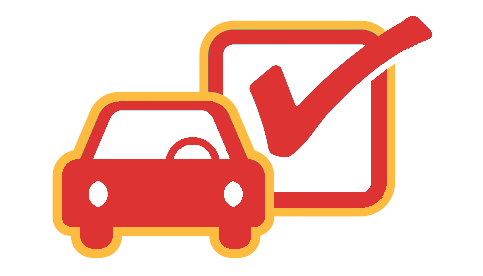Test vehicle assessment
Before you begin the driving test, your vehicle must pass an assessment to ensure it is safe and can be legally operated on public roadways.

The passenger compartment, seat and floor space must be free of any obstructions.The license examiner will check for the following:
- All turn signals are working properly. All brake lamps are working properly.
- Brake and turn signal lamp lenses are not cracked or broken.
- Both front and rear license plates are securely mounted.
- The horn is audible and in good working condition.
- All lug nuts are in place and the tire tread depths are at least 2/32 of an inch.
- Vehicle is free of any obnoxious odors, parasites and insects, and animal fur.
- Vehicle instrument panel gauges are working properly and warning indicator lights are NOT on.
- Driver and passenger seat belts are clean and in good working condition.
- Door handles, windows and door locks are in good working condition.
- Must have at least 1/4 tank of gas.
- For convertible and Jeep-type vehicles, the canopy top must be engaged in the closed and locked position covering the passenger compartment.
- Window and windshield requirements:
- Windshield must not be cracked or chipped in a manner that would adversely a”ect visibility. Stickers or other nontransparent material are allowed only at the lower right hand corner of the windshield and must be no more than four inches by six inches in size.
- Stickers or other nontransparent material are allowed on side and rear windows if it is in an area that does not obstruct the driver’s clear view of the highway or any intersecting highway.
- Window tinting must be approved by an official safety inspection station and noted on the vehicle’s safety check inspection certificate.
- Tinted windows that appear too dark are subject to tint meter verification to ensure compliance prior to the road test.
- Front windshield shade tint must be above the AS-1 marker or no more than four inches from the top center of the windshield, if there is no AS-1 marker.


